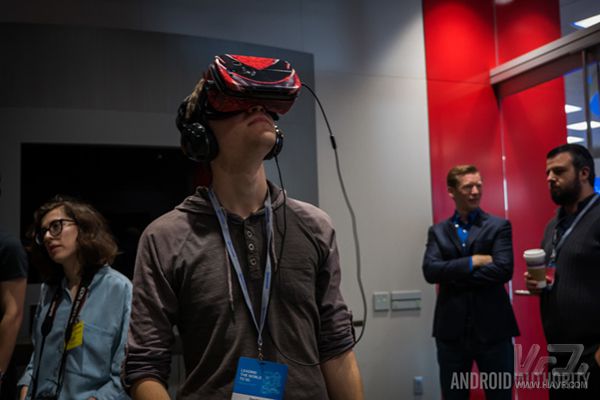
Qualcomm's latest Xiaolong 845 mobile platform is a very rich and powerful chipset that will appear in various platforms such as smartphones, Windows notebooks and virtual reality next year. The biggest feature of the Snapdragon 845 is the improved performance that brings many new features to mobile devices and virtual reality technology. Especially for stand-alone virtual reality heads, Qualcomm's new mobile chipset allows us to feel excited about this market again.
Improvements for VR/ARAs part of a key presentation at the press conference, Qualcomm detailed some of the specific improvements in the field of augmented reality and virtual reality. Xiaolong 845 supports dual 2400×2400 pixel display at the same time and supports 120fps picture quality. One of the more important features is the introduction of rendering and eye tracking techniques to achieve better performance by reducing the GPU rendering load.
The huge difference between the mobile chip's image processing capabilities and the desktop GPU is something we all know. Because the size of the mobile device and the battery capacity are very limited, the performance of the GPU cannot be fully utilized. Especially in the case of virtual reality, the picture needs to be rendered to a very high frame rate and resolution.
The new rendering method uses a very clever "trick", which reduces the resolution of the picture around the line of sight, thereby reducing the burden on the graphics processor. This approach can be easily implemented on all levels of virtual reality hardware, but it is especially important for mobile devices. Combined with eye-tracking technology, this new rendering technology allows users to see the best-performing virtual reality screen at any time.
On the basis of the Adreno 630, the Snapdragon 845 brought about a more substantial upgrade, allowing the GPU to make the effects clearer on the original borders and present a more detailed picture without affecting the overall performance. Rendering polygons brings extra enhancements. The cooperation with the Xiaolong 845 chipset is very helpful for maintaining the frame rate and the shortest response speed in real time in applications.
In the end, Qualcomm also introduced 6-DOF motion tracking technology to improve user tracking accuracy, including synchronizing positions and maps, ensuring that users can keep track of eye tracking when they are moving fast. In addition, the new platform also provides a triangular 3D mesh that is compatible with the user's environment and can create virtual scenes where real scenes merge with each other. In other words, before we hit the wall, we can see a virtual wall in the virtual screen, helping users to further understand the surrounding environment in the virtual space.
Although ARM Mali GPU and Multiview solved some similar problems before the Xiaolong 845 release, it is undeniable that Qualcomm did the same thing. Xiaolong 845 will provide power for most of the flagship Android smart phones next year, so the number of virtual reality products on the market will follow up.
There are still problems to solve
Qualcomm has done a very good job in solving mobile virtual reality hardware, including performance and freedom of movement, but there are still some problems in more extensive systems and even mobile virtual reality technology.
The biggest problem facing portable devices is battery life, especially when rendering high-intensity virtual reality screens. Although Qualcomm tries to compensate for this problem with gestures, it is still not suitable for virtual reality interaction. Developing a virtual reality experience is very expensive, but at present, it is still a niche market. Few consumers are willing to spend a lot of money on equipment.
Although Qualcomm has improved its performance, many people still think that the resolution and refresh rate of the display need to be further improved in order for the product to have an excellent experience to attract more consumers while reducing vertigo. Nausea problem. The Snapdragon 845 supports dual 2K screens and 120fps refresh rate, but it is still quite difficult to make developers' applications run smoothly and smoothly at this level, especially in terms of power consumption.
We may all be waiting for true virtual reality applications to come, whether it is games or 360-degree video, but these are not enough to justify consumers buying virtual reality devices.
The next step in virtual reality
Qualcomm's improvements on the latest mobile platforms will undoubtedly help the virtual reality development market move in the right direction. Hardware, performance enhancements and new features are all essential advances. Perhaps more importantly, the Snapdragon 845 will also help improve the ease of use and lower prices.
If you are not a professional PC user, then the way to experience virtual reality is likely to be through a device such as the Samsung Gear VR, or even a cheaper Google Cardboard and Daydream platform. These products are easier to get into the hands of consumers because of their low price (premise, of course, is a compatible smartphone). The Snapdragon 845 will power more devices next year, which means that more users are likely to experience entry-level mobile virtual reality devices and thus have greater potential for independent virtual reality headsets.
There is still a lot of work to do when virtual reality wants to become a mainstream consumer technology. We need to wait for next year to see what products will appear in the market, and then to judge whether virtual reality will enter the second high-speed development period.
Aluminium wire as a good anticorrosion material,in steel structure surface anti-corrosion(container,dam and sluice gate,ductile iron pipe,bridge etc.)
Aluminum Wire,Zinc Aluminum Wire,High Pure Aluminum Wire,Aluminum Alloy Welding Wire
Shaoxing Tianlong Tin Materials Co.,Ltd. , https://www.tianlongspray.com